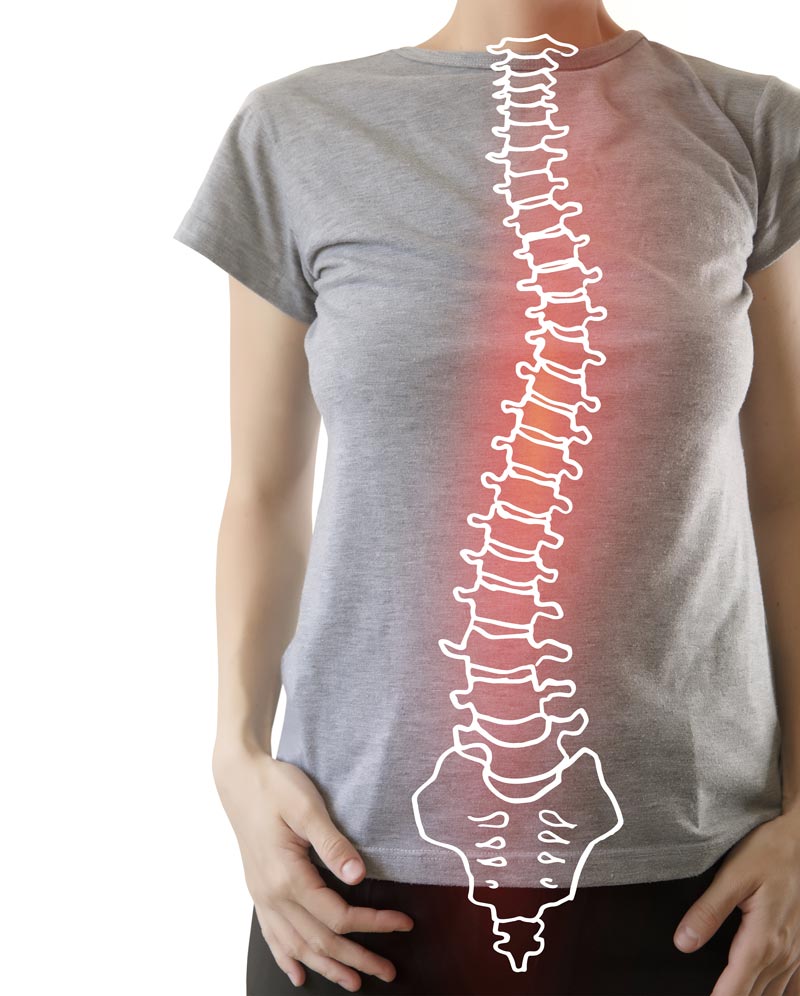Scoliosis Causes and Treatments in Jacksonville, FL
Scoliosis is a spinal condition that afflicts between five to seven million people in the U.S. and accounts for more than a half million diagnoses and treating-doctors visits in Jacksonville Florida and elsewhere each year.
In general, it affects females more than males. However, because genetics can determine whether or not someone develops this condition, it is important for both genders to be medically screened for it, particularly if either of a person's parent has this spinal affliction. This condition generally can be defined as a lateral spinal curvature that is greater than 10 degrees. The apex of the curvature can also go forward, which in medical terminology is called lordosis. It may also curve backward and be labeled as kyphosis. In either variety, the vertebrae in the spinal column are almost always rotated as well.
Causes of Scoliosis
When it comes to determining how this condition is caused, the medical community often admits that no viable factor can be identified. However, in about 20% of cases , identifiable factors can include...
- Spinal Trauma
- Neurological Disease
- Tumors
- Genetics
Symptoms of Scoliosis
Scoliosis can present itself through a variety of symptoms. It can also cause psychological trauma because of how it affects people's appearances. Someone who suffers from a significant and noticeable curvature of the spine may be unable to stand up and walk like other kids his or her age.
- Restricted lung function
- Pain in the back and legs
- Compromised heart function
While psychological trauma is one of the more detrimental side effects of the disease, noticeable curvature only occurs in about 20 percent of sufferers. Many people with this disorder function well enough that their conditions are not noticeable to others. Nonetheless, it is important that people with the condition receive continuous medical monitoring so that their doctor can keep track of the disease's progression. This condition can progress quickly and often become worse in only a matter of months. To ensure that sufferers receive the fastest medical intervention possible, they should be examined every few months by their primary or chiropractic provider.
Diagnosis of Scoliosis
Diagnosing this spinal affliction often requires a thorough physical examination. During the exam, patients can expect their providers to carefully inspect their spinal columns and possibly measure any curvature that is noticeable. If a curve is detected in the spine, the chiropractor or other medical provider may then order x-rays. X-rays help determine to what degree the spine curves and also the physical age of the person's skeleton. It detects the magnification of the curve in the spine and also helps providers learn if any organs have been affected by the curvature.
Another test used to detect and diagnose this condition involves using a device known as a Scoliometer. It essentially measures the size, angle, and direction of the hump or curve in a person's spine. Using this device does not require any type of invasive procedure like surgery. It is also painless, meaning that it can be used safely on the youngest of patients.
Scoliosis can be a serious condition that warrants continued monitoring and prompt treatment. People afflicted with it can experience side effects like altered posture and even pain. However, with proper medical intervention, chiropractic treatments, and modifications to their routine like added exercise, people with it can live out happy, healthy, and entirely normal lives.
Treatment Options for Scoliosis
Once diagnosed, patients with this affliction can expect to receive any of three known treatments for it. Chiropractors in Jacksonville Florida and elsewhere may recommend that patients wear a brace to help maintain the curving of the spine. This treatment is most often recommended for young patients who are still growing and have curvature between 25 and 45 degrees.
Patients may also be viable candidates for surgical intervention, which could help reduce the pain and physical complications of the illness. Surgery is often a last resort of sorts and restricted to helping patients whose curvature is greater than 45 degrees and whose conditions jeopardize the function of their heart, lungs, and other internal organs. Chiropractors may try other methods of treatment for patients whose cases are not medically urgent. Options like chiropractic manipulation, massage, and therapeutic exercise have been known to help alleviate the physical side effects of the condition. Electrical muscle stimulation also may be recommended in some cases. Patients also respond well to continued exercise and maintaining a healthy diet.
It should be noted by parents and other people concerned about this spinal affliction that a majority of cases are not progressive, and people who have this condition live out normal, happy, and healthy lives. In rare cases, primarily in prepubescent females under the age of 12, this illness can progress rapidly, particularly in the year leading up to a girl's first menstrual cycle.

